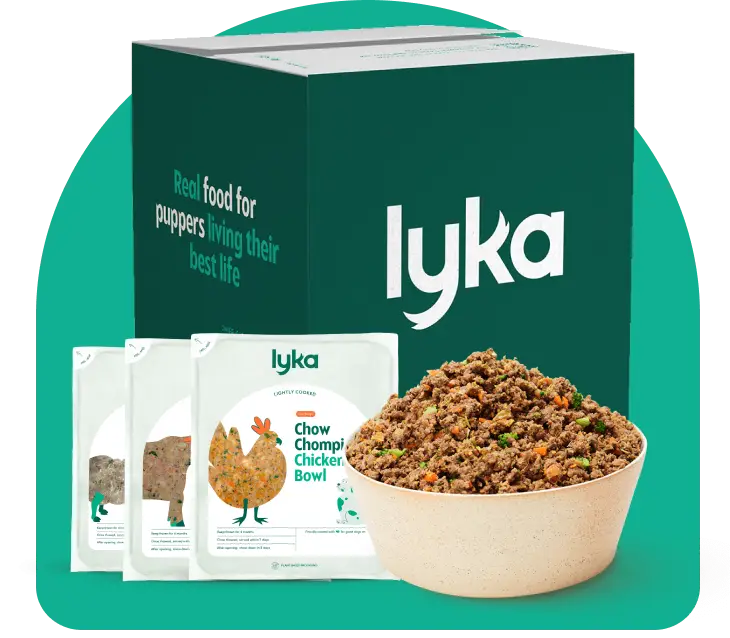Everything you need to know about Essential Fatty Acids for your dog

By Anna Podolsky

In society, fats tend to have a negative connotation surrounding them, thanks to junk human foods that are often loaded with trans fats. The reality is that fats are one of the most important macronutrients in your dog’s diet. The right types of fats, Essential Fatty Acids, are critical to optimise your dog’s bodily functions.
Essential Fatty Acids for dogs
Dietary fatty acids are grouped into three types, based on the location of the first double bond in their molecular structure: omega-3s, omega-6s and omega-9s.
Fatty acids can be then further classified into essential or non-essential. Dogs can synthesise omega 9s in their body, therefore they aren’t considered essential in a dog’s diet. On the other hand, dogs aren’t capable of synthesising certain omega 3s or omega 6s in their body, hence must be provided as part of your dog’s diet. These fats are known as Essential Fatty Acids.
The following fatty acids are considered essential for dogs:
Omega-3s
Alpha-linolenic acid (ALA)
Eicosapentaenoic acid (EPA)
Docosahexaenoic acid (DHA)
For dogs to use ALA, their bodies must convert it to EPA & DHA, a highly inefficient function. Hence a dog’s diet should maximise EPA & DHA, rather than ALA.
Omega-6s
Linoleic acid (LA)
Arachidonic acid (AA) is another omega-6 fatty acid, that is essential for cats, but not for dogs. As opposed to cats, dogs can efficiently convert LA to AA in their bodies due to an enzyme in their digestive systems and is therefore not considered an Essential Fatty Acid.

The benefits of dietary fats for your dog
Fats are an excellent source of energy and convert 2.25 times more energy than protein or carbohydrates. Fats are also necessary for your dog to absorb some vitamins in their diet including Vitamin A, D, E and K. Healthy joints and a shiny and healthy coat is another benefit your dog will reap.
To achieve these benefits, it is important to consider not only the amount of fat in your dog’s diet but also the ratio of fats. Omega-6s and omega-3s have different properties and work together to provide their nutritional value. If not balanced correctly, consumption can lead to one dangerous side-effect in your dog’s body: inflammation.
Omega-6s stimulate hormones that promote inflammation in your dog’s body. Omega-3s balance this by producing hormones that reduce inflammation and regulate the immune system. If your dog consumes too much omega-6 without enough omega-3, this can lead to a state of chronic inflammation in a dog’s body. This may lead to diseases such as cardiovascular disease, cancers, arthritis, bowel diseases, skin conditions and a general imbalance in their immune system.
The optimal ratio of Essential Fatty Acids
So, what is the optimal ratio of omega-6s to omega-3s for your dog? Unfortunately, studies on this topic are ongoing and there is still no conclusive answer.
AAFCO, the USA body that sets recommendations and regulates animal foods, recommends an omega-6: omega-3 ratio of 30:1 or less. In many commercial pet foods, the ratio is hence close to this figure.
In contrast, your dog’s ancestors’ diet had a low omega-6: omega-3 ratio and many studies suggest that a lower ratio, in line with the ancestral diet, is better. Research by Dr. Gregory Reinhart suggests a ratio between 5:1-10:1 is more appropriate. Leading global omega-3 expert Dr. Doug Bibus, recommends an even lower ratio of 2:1 – 4:1.
Food sources of Essential Fatty Acids
Omega 3s
EPAs are found in fish, fish oils and seafood sources such as oysters and mussels.
DHAs are found in fish, fish oils and seafood sources such as oysters and mussels, and eggs.
ALAs are found in eggs, walnuts and flaxseed oils, canola oils and algae such as spirulina.
Omega 6s
LAs are found in animal meats and plant-based oils such as corn, safflower or soybean oils.

Some controversial sources of Essential Fatty Acids
Grains such as corn and soy have higher omega-6: omega-3 levels than grass and leafy vegetation. This translates to meat from grain-eating livestock having a higher omega-6: omega-3 ratio than the meat from grass-fed livestock.

Our dog’s ancestors used to eat prey that grazed on leaves and other vegetation, and therefore the prey’s meat also had a low omega-6: omega-3 ratio. We can mimic this in our dog’s diet by feeding them grass-fed and free-range meats. For example, grain-fed beef typically has an omega 6: omega 3 ratio of 5:1 – 10:1, while grass-fed beef has a ratio of 1:1 – 3:1.
Essential Fatty Acids in Lyka
At Lyka, we use grass-fed beef and lamb in our recipes, as well as free-range or wild-caught proteins. All of our recipes contain an omega 6: omega 3 ratio between 3:1 to 5:1.
Not only are they the more sustainable option, but they also provide a lower ratio of omega 6:3 than their grain-fed equivalents. We also use fish oil and sardines in our recipes to provide high levels of omega-3 fatty acids. Read more about our ingredients and build your Starter Box today.







